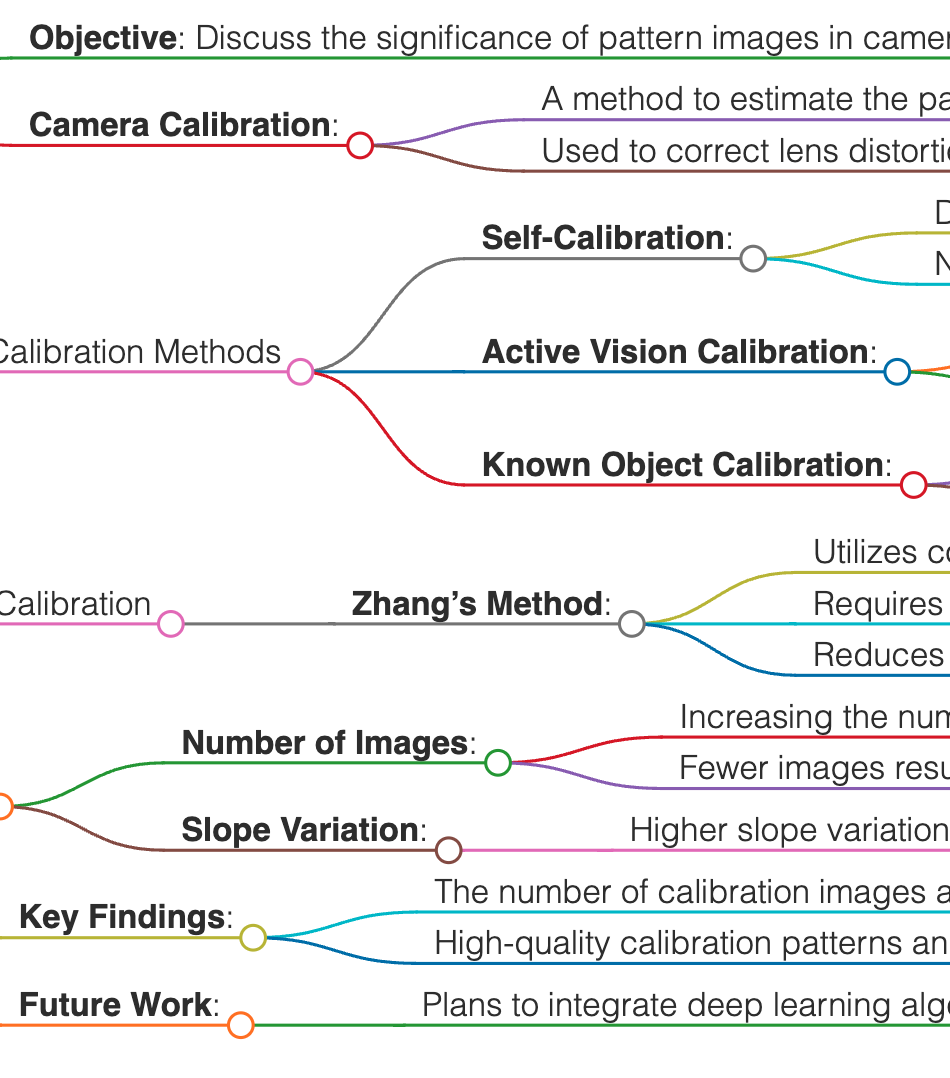Pattern_Image_Significance_for_Camera_Calibration
https://www.pirahansiah.com/farshid/portfolio/publications/Papers/Pattern_Image_Significance_for_Camera_Calibration
PDF Download My Conference Paper

Pattern Image Significance for Camera Calibration
1. Introduction
- Objective: Discuss the significance of pattern images in camera calibration.
- Camera Calibration:
- A method to estimate the parameters of a pinhole camera model.
- Used to correct lens distortion and for 3D reconstruction in applications like machine vision, robotics, and navigation systems.
2. Categories of Camera Calibration Methods
- Self-Calibration:
- Does not rely on a known calibration object.
- Nonlinear, sensitive to noise, requires more computational power.
- Active Vision Calibration:
- Based on controlled camera motion.
- Solves parameters by using images captured during known motions.
- Known Object Calibration:
- Traditional method using calibration patterns like chessboards.
- High accuracy but requires specific knowledge of the calibration environment.
3. Algorithms for Camera Calibration
- Zhang’s Method:
- Utilizes common calibration points and self-calibration algorithms.
- Requires multiple images of a known calibration pattern from different angles.
- Reduces reprojection errors and enhances calibration accuracy.
4. Experimental Findings
- Number of Images:
- Increasing the number of calibration images improves accuracy.
- Fewer images result in higher re-projection errors.
- Slope Variation:
- Higher slope variation in calibration pattern images reduces reprojection errors.
5. Conclusion
- Key Findings:
- The number of calibration images and slope variation play a crucial role in calibration accuracy.
- High-quality calibration patterns and field of view improve calibration results.
- Future Work:
- Plans to integrate deep learning algorithms to optimize camera calibration.